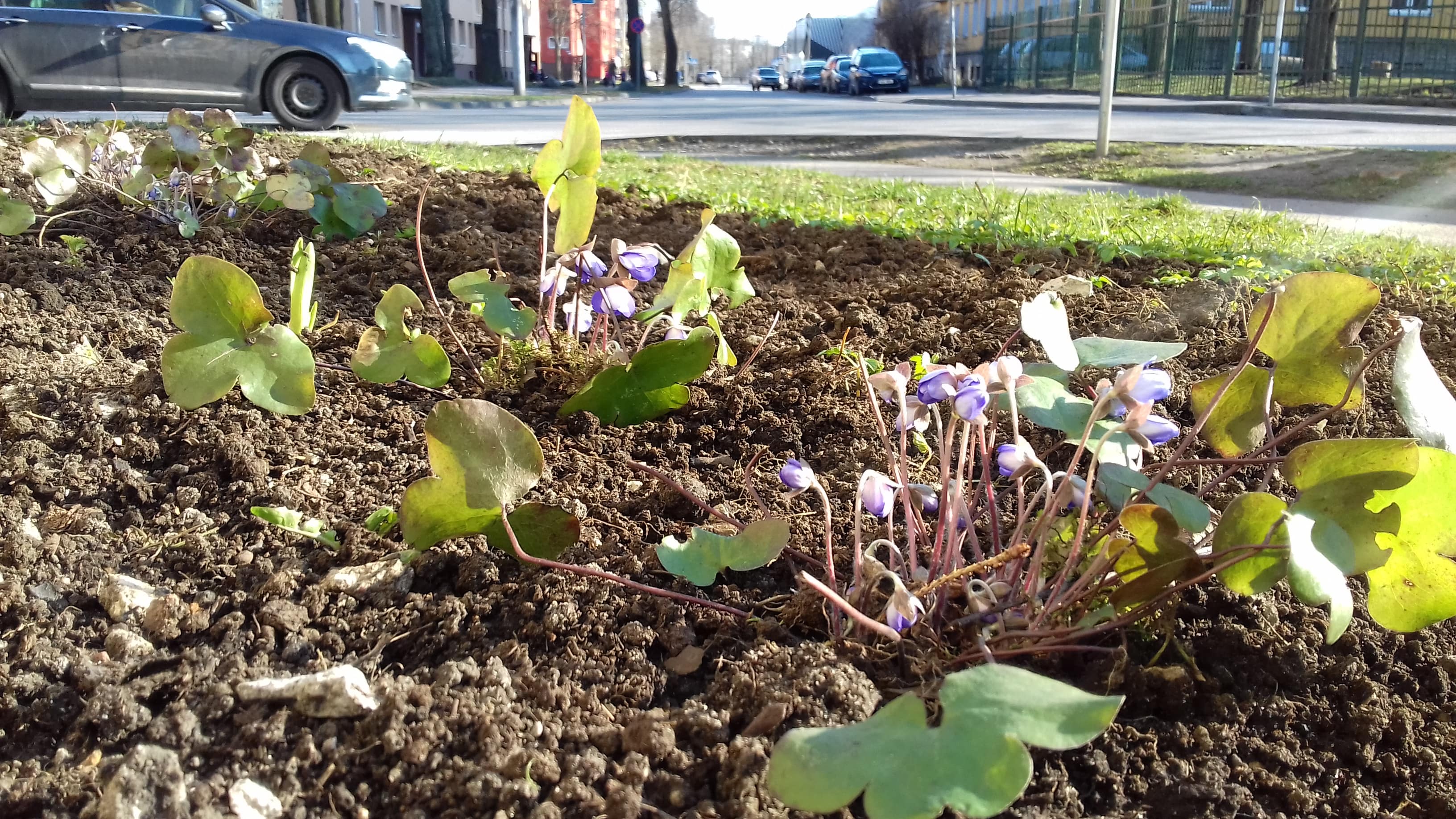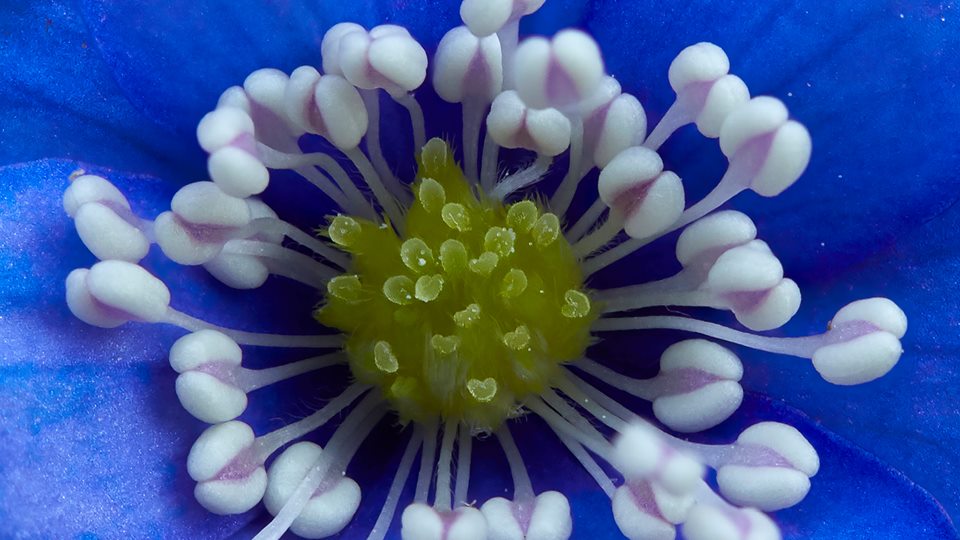
Heino, the caretaker of the building next door, has tried to bring blue hepatica (Hepatica nobilis, liverwort) which love the shady forest floor, to a cultural city garden. Regrettably, the result will be the same as when picking sini/lilled (“blue flowers”) to put in a vase – the beauty is not long lived, but understandably the desire to be close to sinililled is great. You need to go to the woods to meet them! And while your’re at it, take time to support a ban on logging in Estonia during the spring nesting season. (Read more at Eesti Metsa Abiks / Estonian Forest Aid). Photo: Riina Kindlam
Considering how many people in Estonia shared images of sinililled on social media over the weekend, it was obvious the joy this first bloomer brings. There were macro-shots, palmfuls for the tasting (beware – they’re used in hermal remedies, but can be toxic), and of course picked into an old-fashioned stout crystal vase and set in the middle of a kohvi/serviis.

Macro photo of hepatica by Arne Ader from Otepää, South-Estonia.
Hepatica is one of the first plants, which blooms in the spring. It needs more light during the time it blooms and has to wrap up before the leht/puud (deciduous trees) leaf out. In urban settings, including along the walls of the buildings in the first photo, lumi/kellukesed (snowdrops) and märtsi/kellukesed (spring snowflakes) began blooming early as well, but they are kultuur/taimed (naturalised), native to central and southern Europe.
Naturally, Estonians await blossoming nurme/nukud (Primula veris, cowslip), sirelid (lilacs) and õuna/puud (apple trees), but sinililled are the first warm eyes of spring, which greet you in the forest.
“Lumivalged pärlid sinisel taldrikul”: nii on öelnud sinilille kohta Kustas Põldmaa. Kersti Merilaas kõneleb aga sinilillest nõnda: Kuula, laanes lumises / vaikne kutse kumises: / ärgu kartku enam keegi, / sinilill ju süütas leegi, / usaldagem kevadet.
Riina Kindlam,Tallinn










